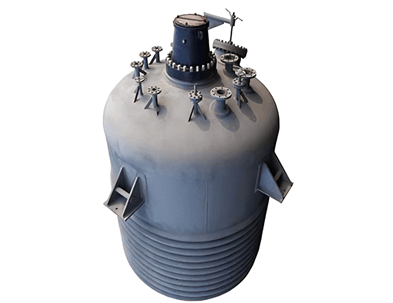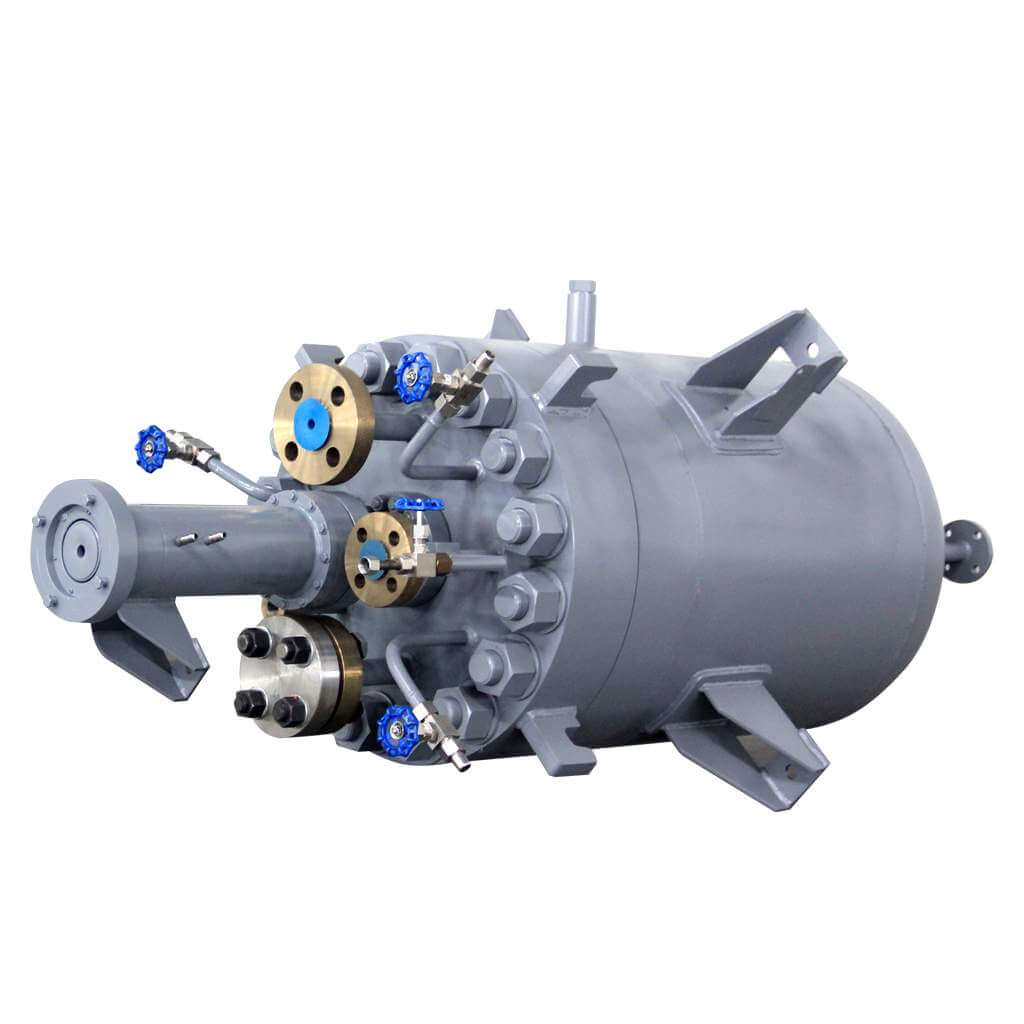

Hydrogenation Reactor
Hydrogenation Reactor:used in chemical synthesis, pharmaceutical manufacturing, food processing, and other fields.
Material
stainless steel (316, 304), carbon steel, others
Capacity (L)
10-10000+
Mixing system
anchor, paddle, frame and others
Heating system
electric heating, oil heating and others
Hydrogenation reactors are widely used in various catalytic reaction speeds, high-pressure and high-temperature generation, hydrogenation reactions, vapor-liquid two-phase, liquid-liquid two-phase, chemical reactions, corrosion detection, precision processing, supercritical extraction, and other applications. Mainly distributed in petrochemical equipment, organic chemistry, pharmaceutical industry, polymer synthesis, metallurgical industry, and other industries. At the same time, it has the characteristics of heat resistance, corrosion resistance, and high production capacity.
Request a quoteThe hydrogenation reactor has the advantages of high-temperature resistance, corrosion resistance, and strong production capacity. Widely used in pharmaceuticals, beverages, chemicals, pigments, resins, scientific research, and other industrial fields. The hydrogenation reactor is a combination of a reaction vessel, reaction condition control system, and experimental equipment. It strictly controls important parameters such as temperature, pressure, stirring, and reactants/products during the reaction process.

The materials of hydrogenation reactors usually include carbon manganese steel, stainless steel, zirconium, nickel-based alloys, and other composite materials. According to the manufacturing structure of the hydrogenation reactor, it can be divided into three types: open flat cover reactor, open butt welding flange reactor, and closed reactor.
The stirring forms of hydrogenation reactors usually include anchor type, paddle type, turbine type, propeller type frame type, etc. When the height of the stirring device is large, multi-layer stirring paddles can be used, or multi-layer stirring blades can be used.
Hydrogenation reactors have different sealing types, which can be divided into packing seals, mechanical seals, and magnetic seals. The heating method is electric heating, and the cooling method is jacket cooling and coil cooling in the kettle. In the experiment, if the gas is replaced with nitrogen or hydrogen or a hydrogen reaction is carried out, the air in the hydrogenation reactor kettle will be converted into the gas required for the reaction. There are usually two methods. One is to evacuate the reaction part and then pass the gas to be reacted through the hydrogenation reactor for reaction. The other is to introduce the required gas first, then close the intake valve, and then open the exhaust valve. After three round trips, the gas in the hydrogenation reactor was replaced.
The hydrogenation reactor is a reversible, exothermic, molecular water reduction reaction. According to the principle, the low-temperature and high-pressure glass hydrogen reaction part moves from chemical equilibrium to hydrogenation reactor. The temperature required for the hydrogenation process depends on the activity of the catalyst used. Catalysts with higher activity can use lower temperatures. Under the reaction temperature conditions, for hydrogen reactions with small equilibrium constants (such as hydrogen plus carbon monoxide to synthesize methanol), in order to increase the equilibrium conversion rate, the reaction process should be carried out under high pressure, which is also beneficial to the reaction speed. Using excess hydrogen can not only increase the reaction rate and the conversion rate of hydrogenated substances but also facilitate the removal of heat from the reaction. Excess hydrogen can be recycled.
The commonly used hydrogen reaction part is used in liquid-phase hydrogenation processes (such as petroleum hydrogenation, heavy oil hydrogen fission, etc.). Liquid-phase hydrogenation is always performed under pressure, and the process can be batch or continuous. Batch liquid phase hydrogenation usually uses a stirred pressure section or foam hydrogenation reactor. Another type of hydrogenation reactor is used for gas-phase continuous hydrogenation processes, such as benzene digestion of cyclohexane under normal pressure and carbon monoxide high-pressure gas phase hydrogenation of methanol. The type of hydrogenation reactor can be tubular or tower type. Under high temperature and pressure, hydrogen in steel combines with carbon atoms to form methane, making the steel brittle, which is called hydrogen corrosion. Therefore, alloy steel should be used for high-pressure hydrogenation reactors. Hydrogen is a flammable and explosive substance, and safety measures should be taken into consideration during the hydrogenation process.
The hydrogenation reactor can completely seal the reaction medium in the high-pressure part under conditions such as high temperature, high pressure, high vacuum, high speed, suspension, convection, etc., and can safely react with harsh media such as flammable, explosive, flammable, and explosive. Highly toxic.
The hydrogenation reactor uses an annular rare earth permanent magnet combination driver, which has the characteristics of large stirring torque, equivalent to mechanical stirring, static sealing, and no leakage. The auxiliary materials are mainly made of 1Cr18Ni9Ti stainless steel. According to different media requirements, special materials such as 316L stainless steel, titanium (TA2), nickel, tantalum, zirconium, Harbin alloy, and polyethylene lining can be used.




